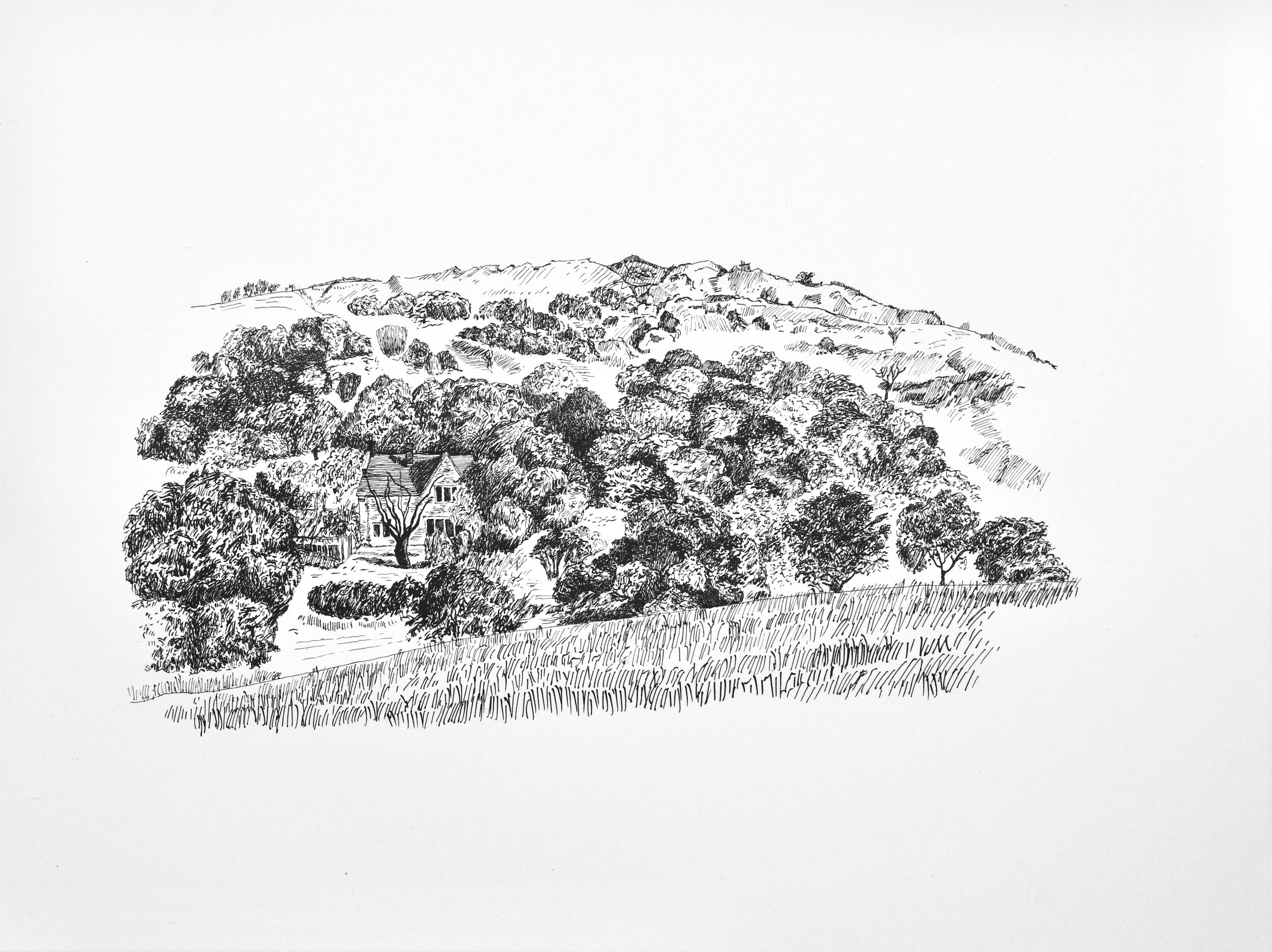The Importance of mark making in drawing
Lazy Hound
Mark making fulfils a basic need. Drawing has been in existence since the caveman times, when they would draw in outline and colour animals on the cave walls.
In studying past masters’ drawings, they often show line, hatching, cross hatching, squiggles and contours, to indicate form, tone and shadows; varying in weight and density to add depth. This may in be in part to do with the implements that they were using at the time, such is dip nibs, quills, graphite, conte crayon, etc. In my opinion, they gave their drawings character, life, emotion, spontaneity, texture, movement, depth and form. These all add a human handmade quality to their work, which I believe is more relevant today than ever, with the hard computer images, digital photography and photo realism largely featuring in the current age of impressive technology. The process of drawing and also sketching from life teaches us to look properly and to understand what we are seeing. Something that we do not get with fleeting split-second photographs, although I do love photography as a medium in its own right.
Photography played a part in freeing artists up from having to accurately record scenes and items in precise details; allowing more expression and helping to make drawing an artistic medium in its own right, with the honest approach of interpreting what one sees with marks and line. It becomes much more about the drawing. I personally feel that this approach makes it much more interesting and creative for the artist, as well as for the viewer to see, with the element of play and expression forming a part of the process. I find it is an excellent way to make the mundane much more interesting too.
Drawing is such a vast skill, with a huge variety in different media, such as ink, paint, pencil and printmaking taking it to different levels, which all have their own distinctive character; each determining the types of marks to use. I am always astounded at the quality and diversity of drawing based artwork in the Society of Graphic Fine Art (The Drawing Society) exhibitions.
Good examples of past masters line and mark making in drawings and sketches are Leonardo Da Vinci’s, Michelangelo’s, Rembrandt’s and Vincent Van Gogh’s landscape drawings, which are a big influence on my work, with his use of a variety of marks, lines and squiggles. I also love Augustus John’s portrait sketches and drawings.
I include some examples of my own artwork, to show mark making with some explanations on why it excites me and its role in my drawings.
Lazy Hound Copperplate Engraving (a 14th century technique of lines and marks sculptured into the plate with a burin chisel)
I love to use contour lines to express the form and to use intermediate lines within the contours to add shade, contrast and shadow, all in the same direction. This helps to keep the drawing crisp and areas smooth. The use of fine small marks indicate the texture of the fur. This is imagination used to give the subject matter more character and life. This picture was produced from a sketch and from observing directly from life.
Woodland Landscape abstract drawing.
Using a combination of different soft grades of pencils, I really enjoyed playing with contour’s, varied line weight, dots, dashes and marks to build up textures and the forms. For me it became much more about the drawing, rather than the subject matter. The lines are marks are broken up with white space to add contrast and give the marks air space. I find it more challenging and interesting experimenting and using this technique in my work.
Tree Tops Indian Ink Drawing
This is one of my recent drawings, using white space to lighten the intensity of it and to give the marks some air around them, so that they are clearly seen. I loved playing with squiggles and cross hatching, achieve the texture and form of the trees. The lighter hatching in the background with space between the lines, helps to give form to the rocky and hilly areas, pushing them into the distance. Although the picture looks representational, it became much more about the drawing and the mark making.
Woodcock’s Petworth Indian Ink Drawing
Produced using my sketch reference. I really enjoyed using contours to help show the character of the uneven old roof and tiles, together with line work to suggest brick work and wall tiling. The linear shading help to show the handmade character of the drawing, which in turn enhances the character of the old, wonky building.
Life Drawing Study, using soft graphite sticks
This is an example of one of my life drawings, which has been cropped to show the heard. Whilst trying to accurately depict the model, I was taking the honest approach of expressing the character of the medium, using lines and marks. In my opinion, this approach helps to both give form and some energy or life to the drawing.






